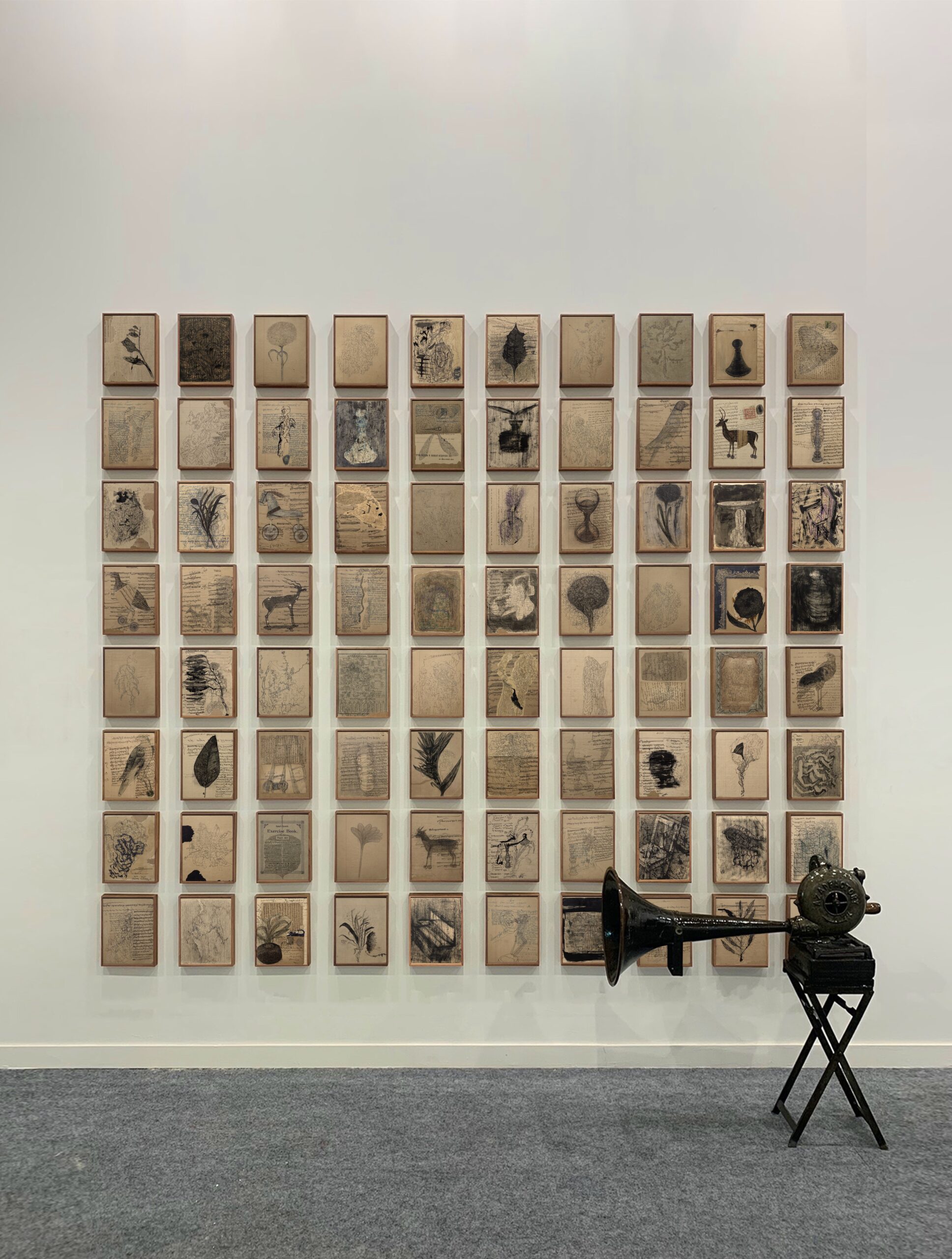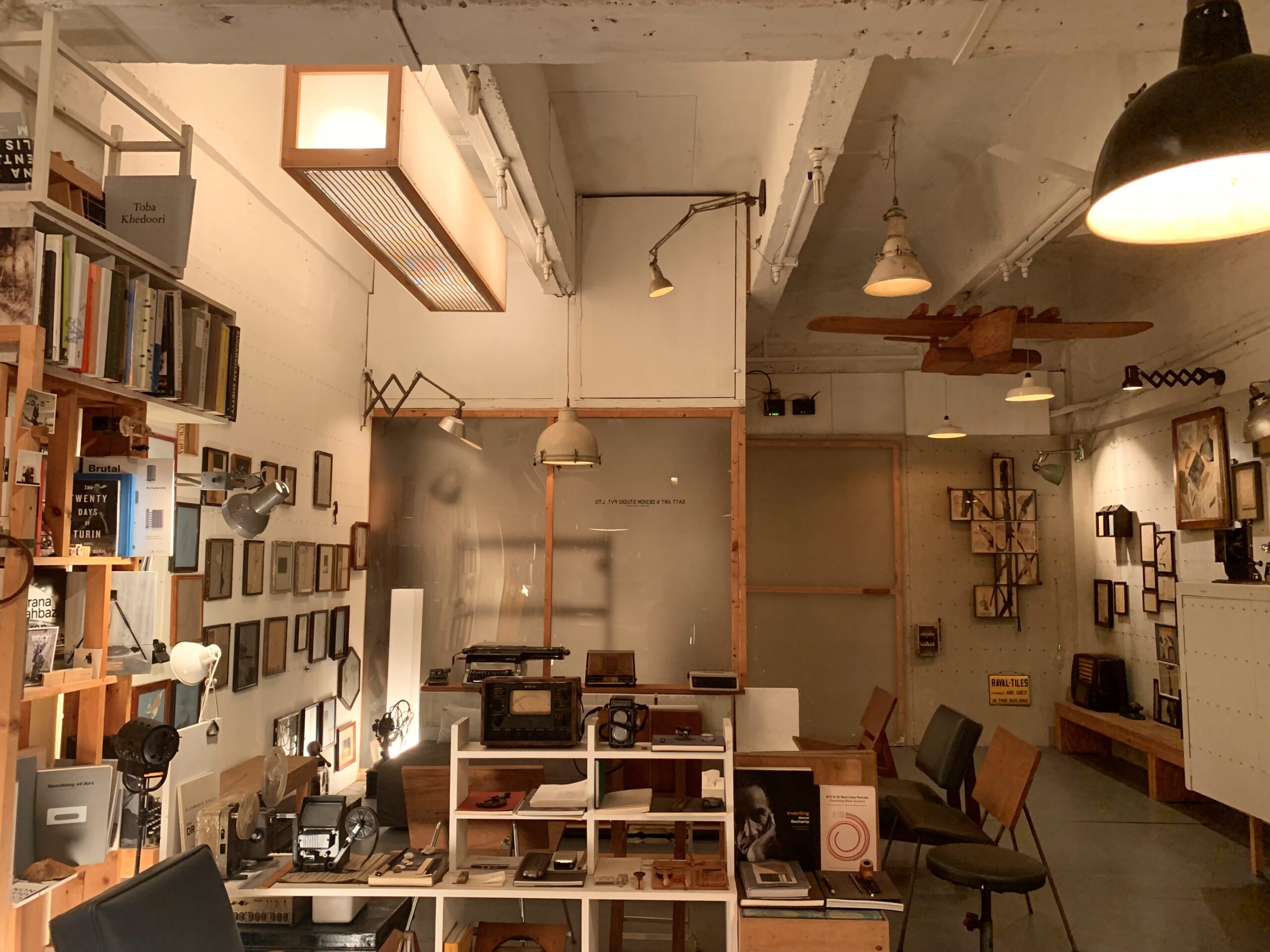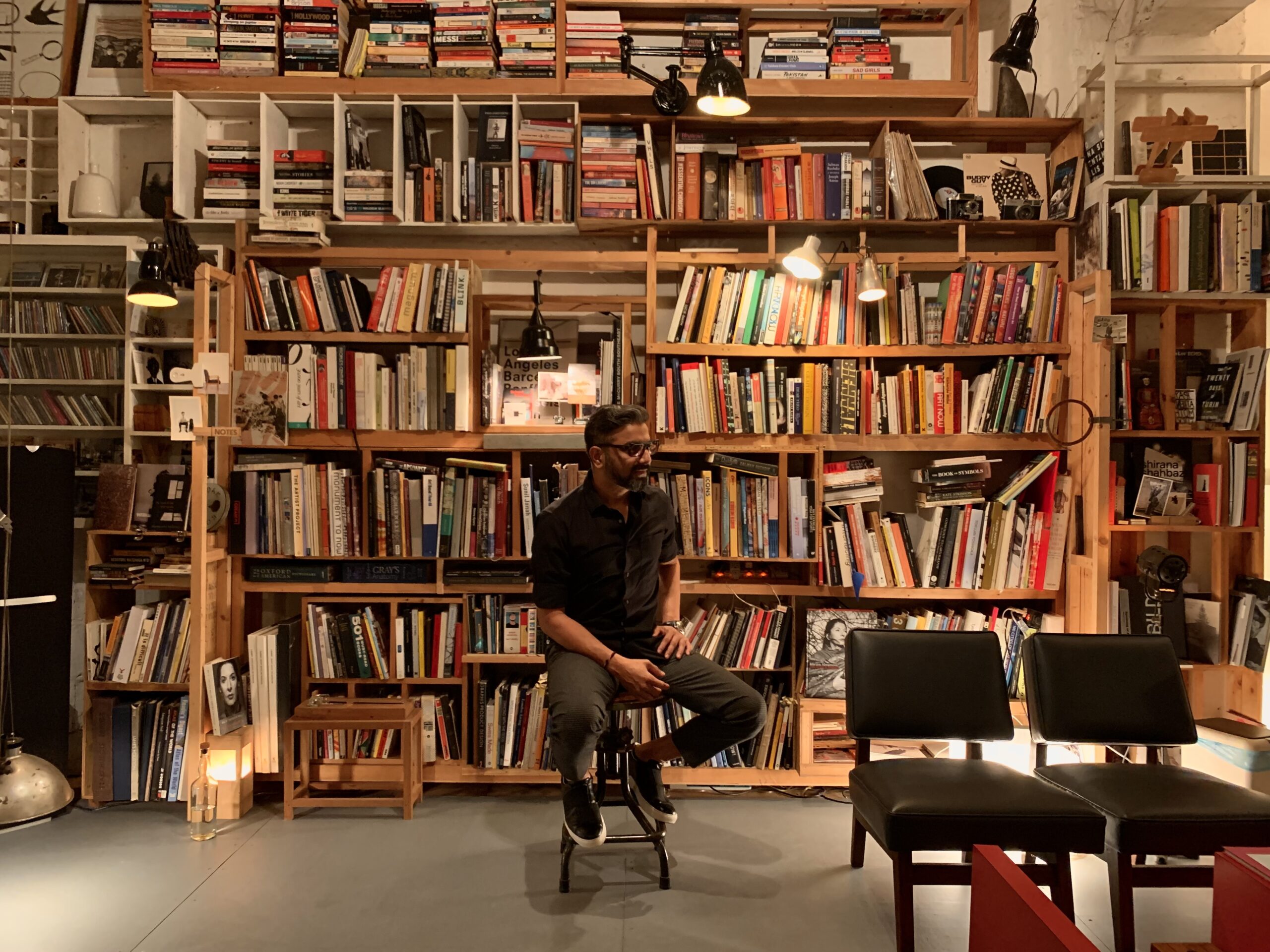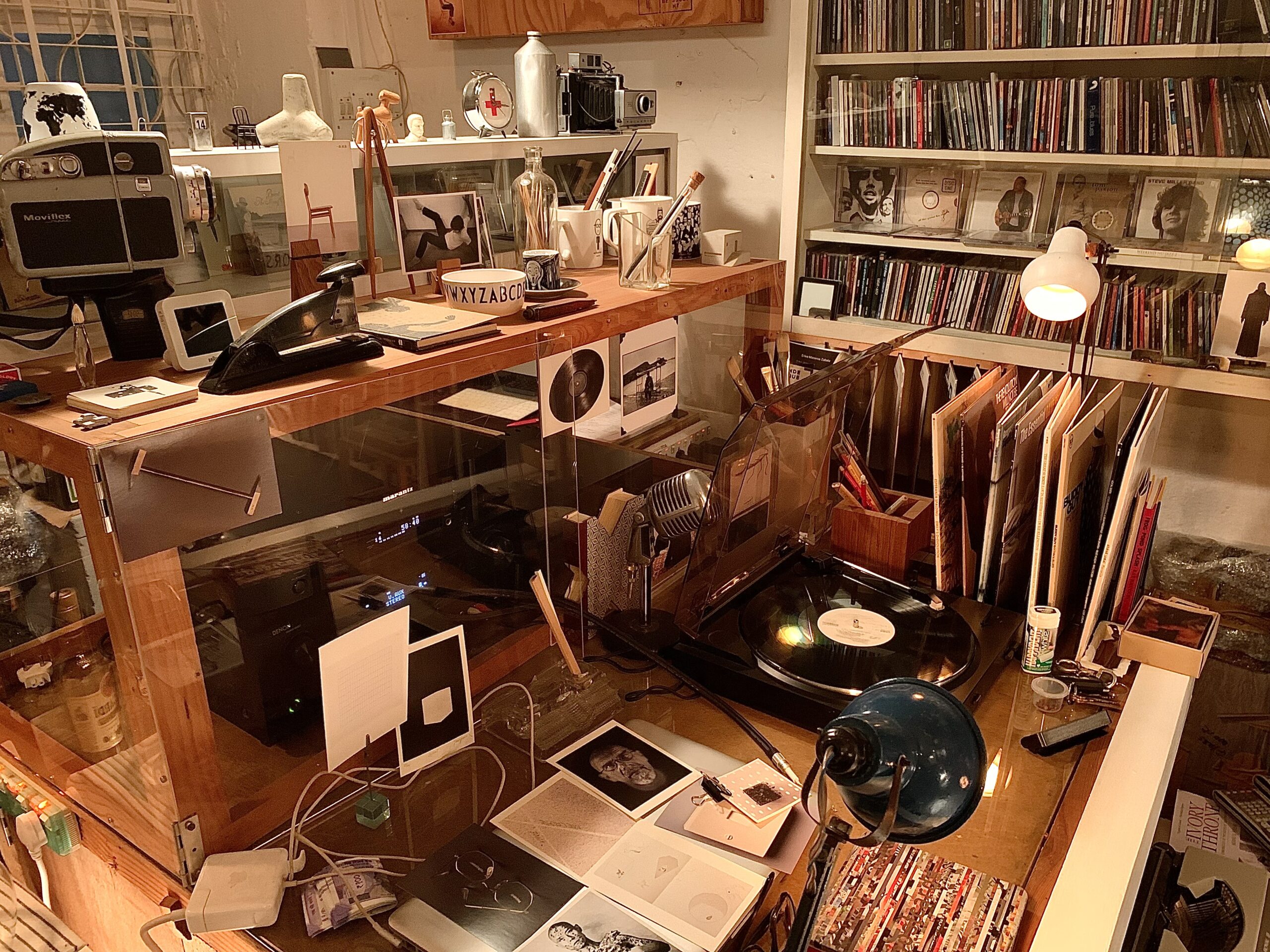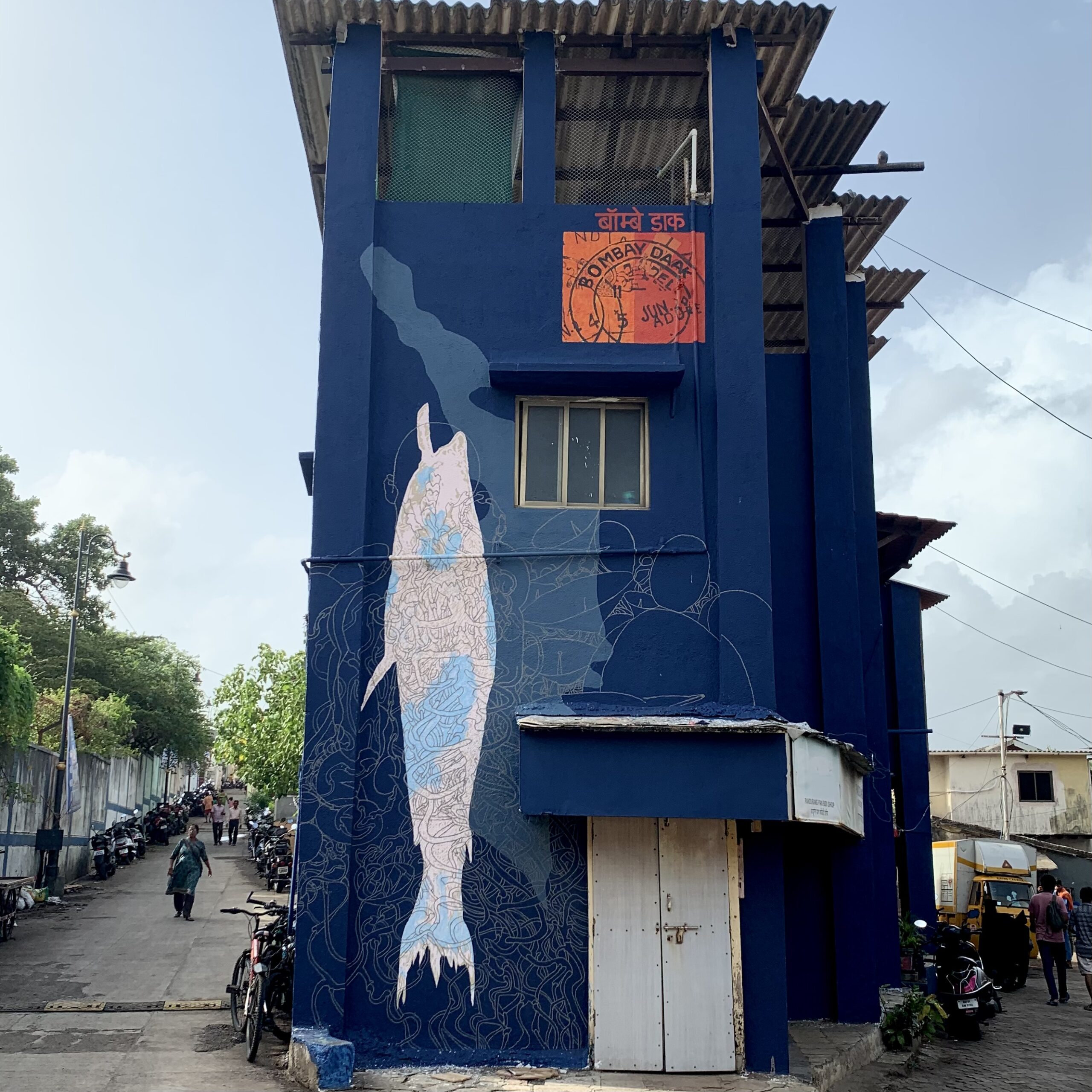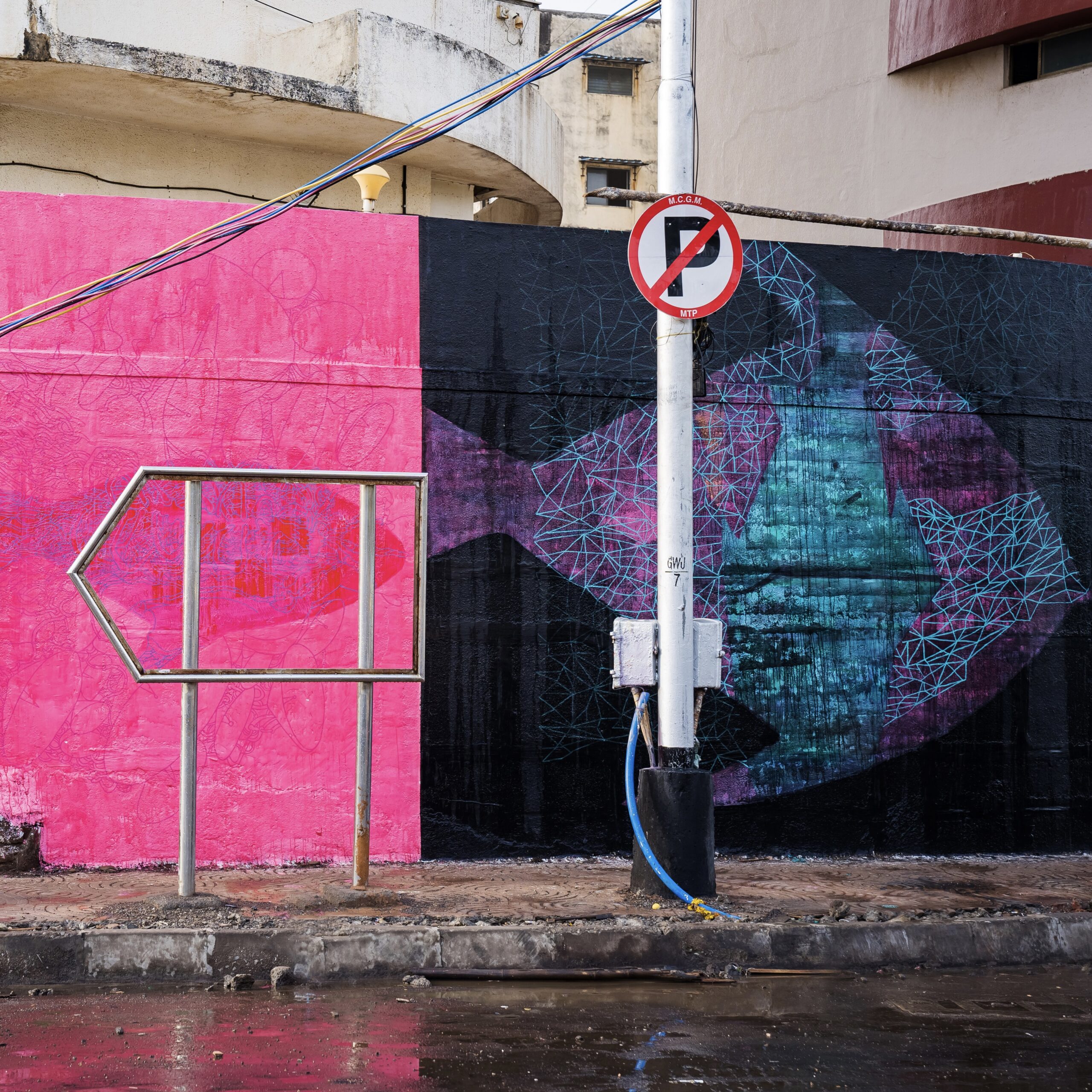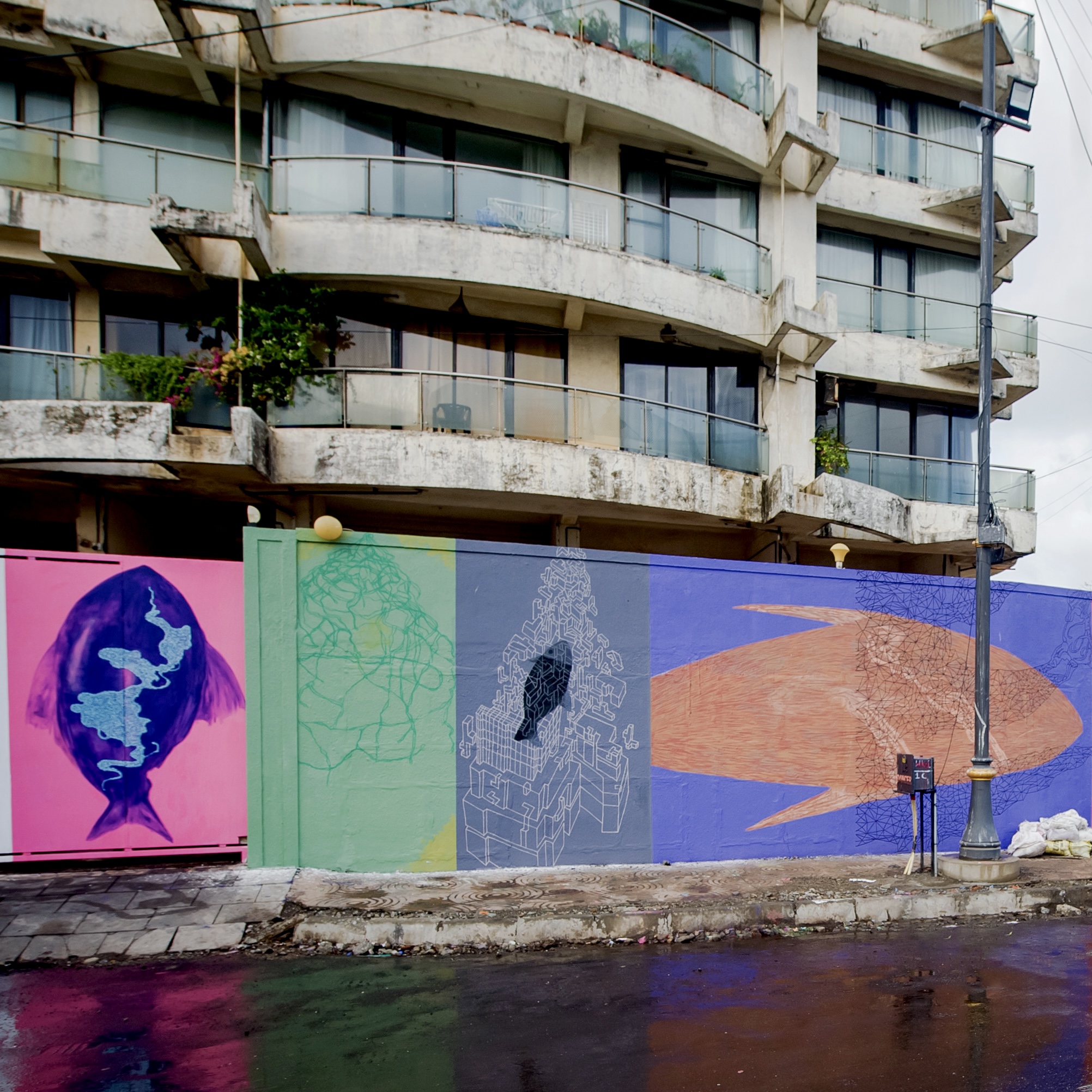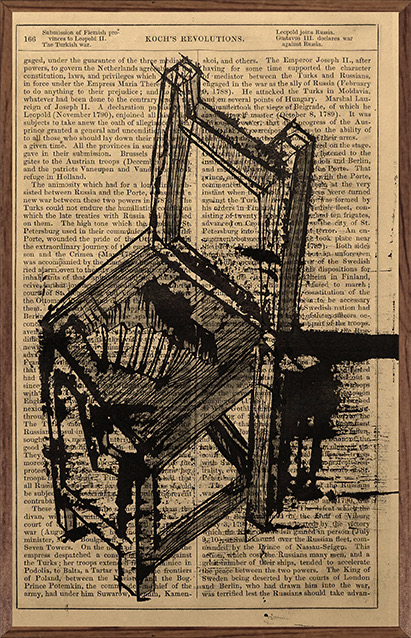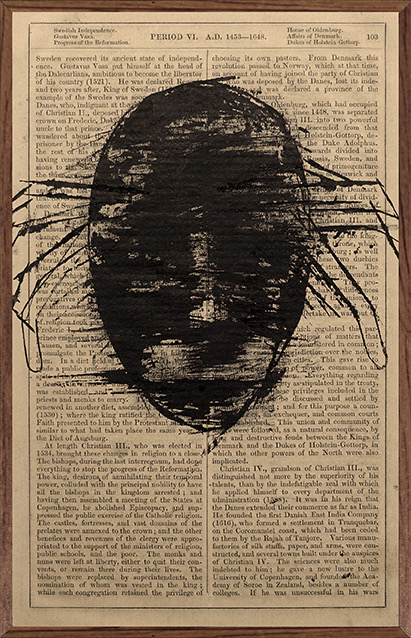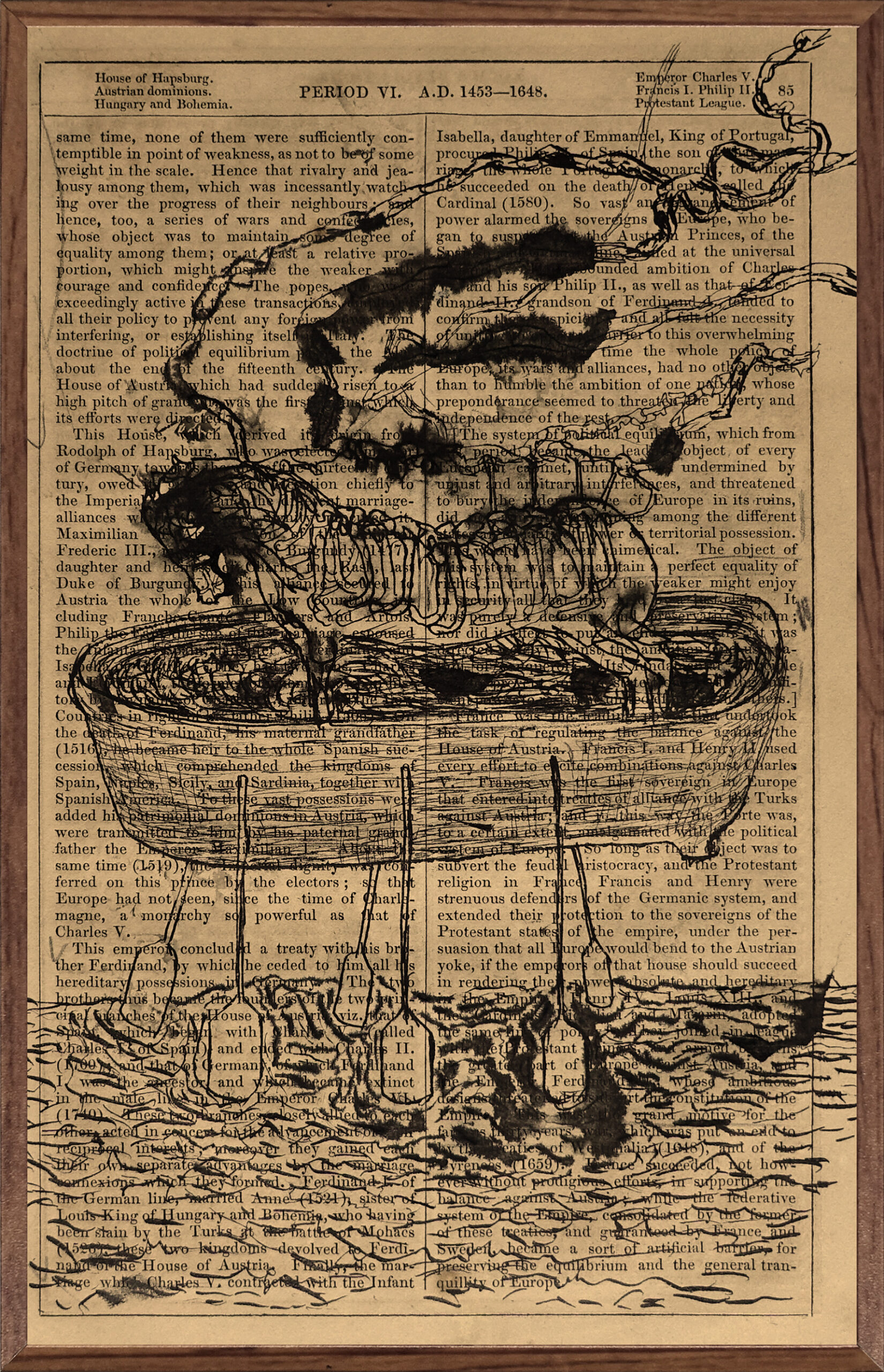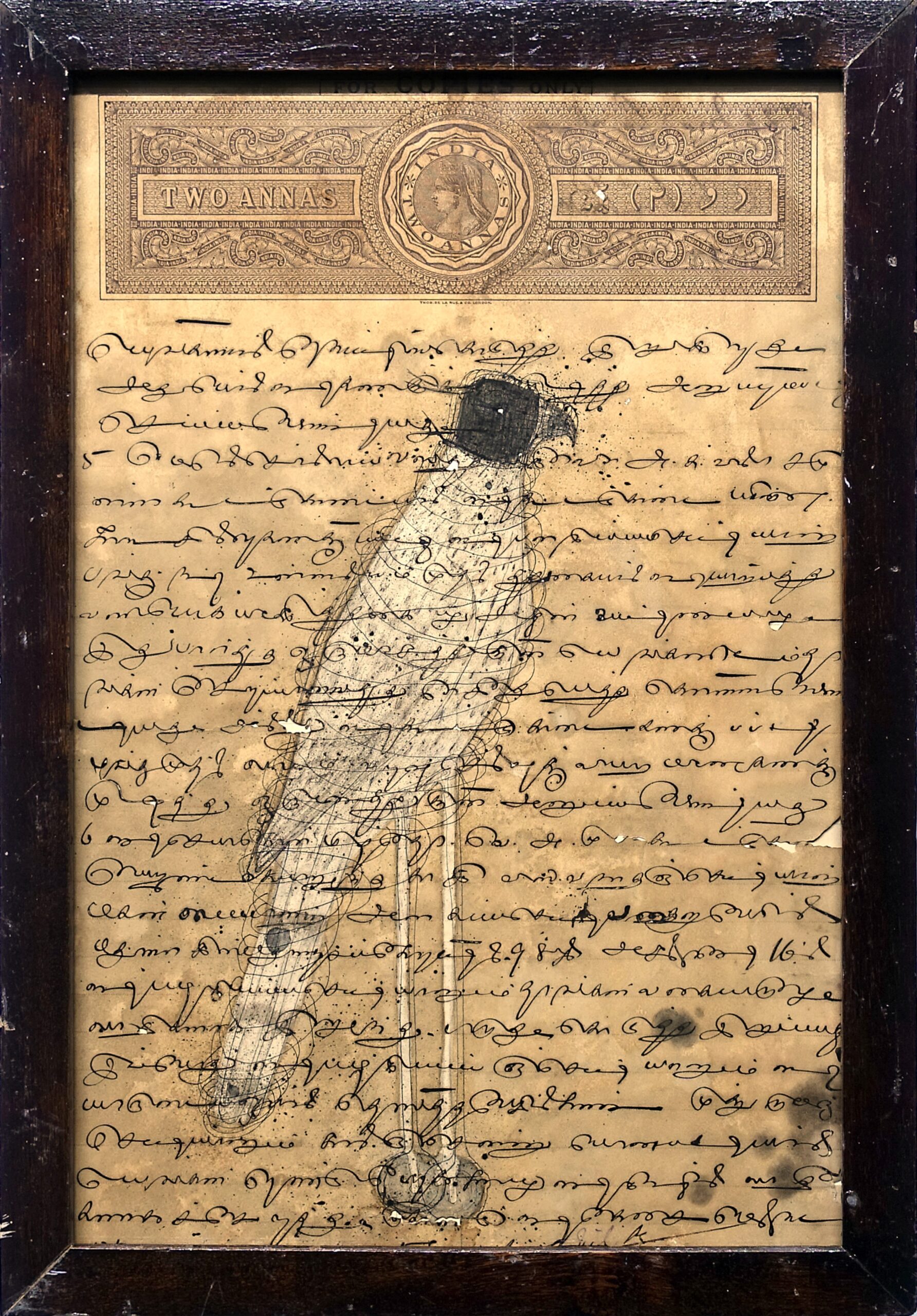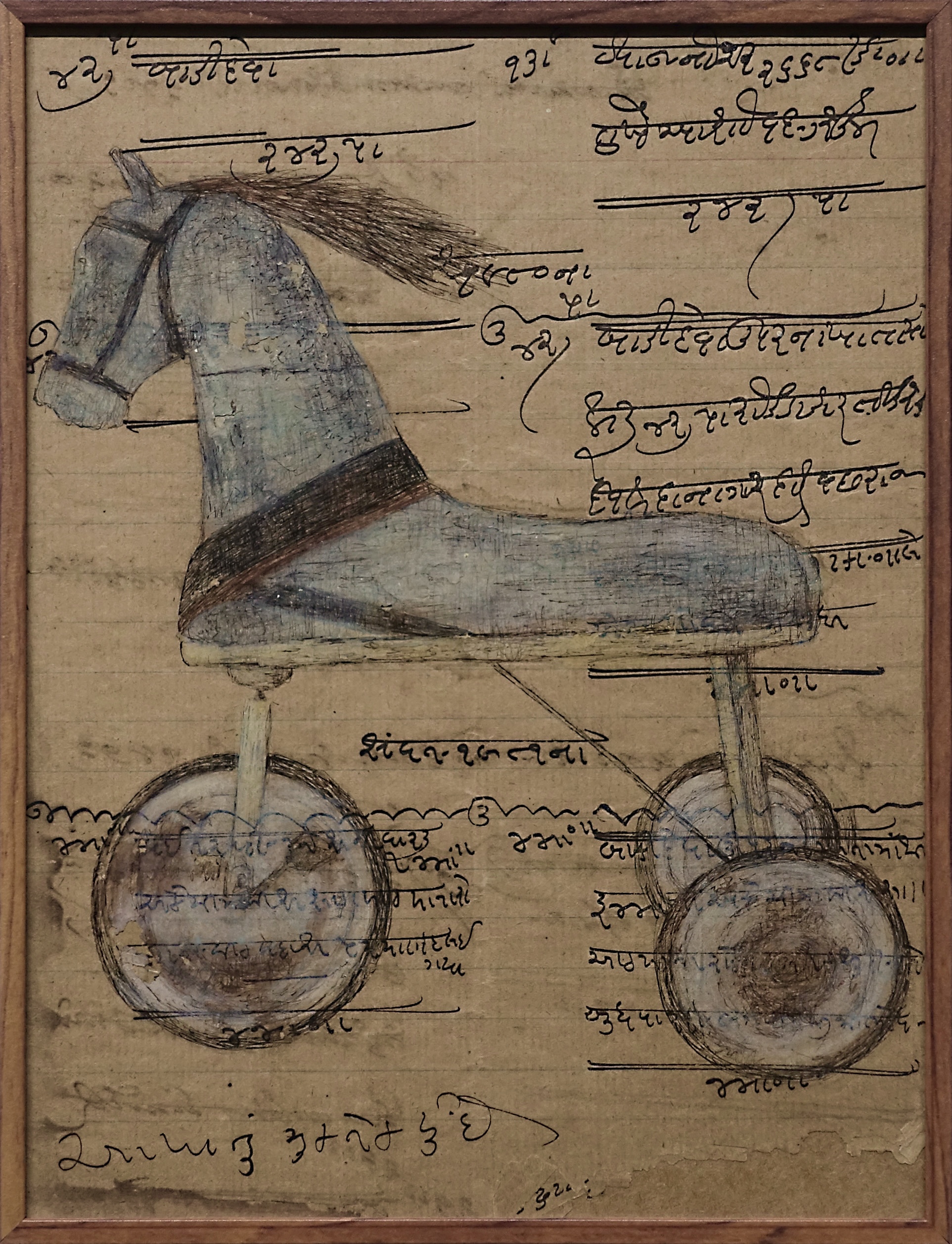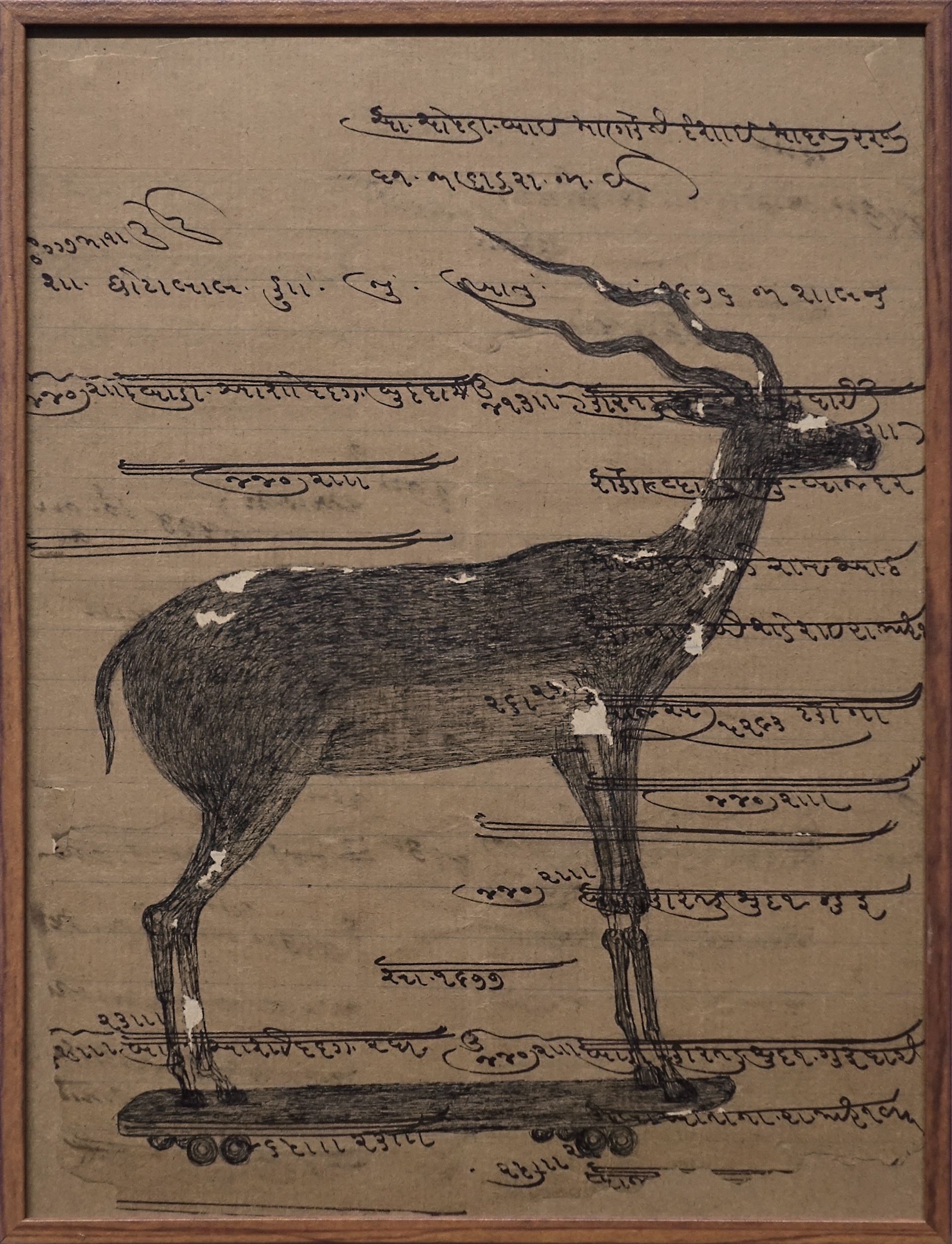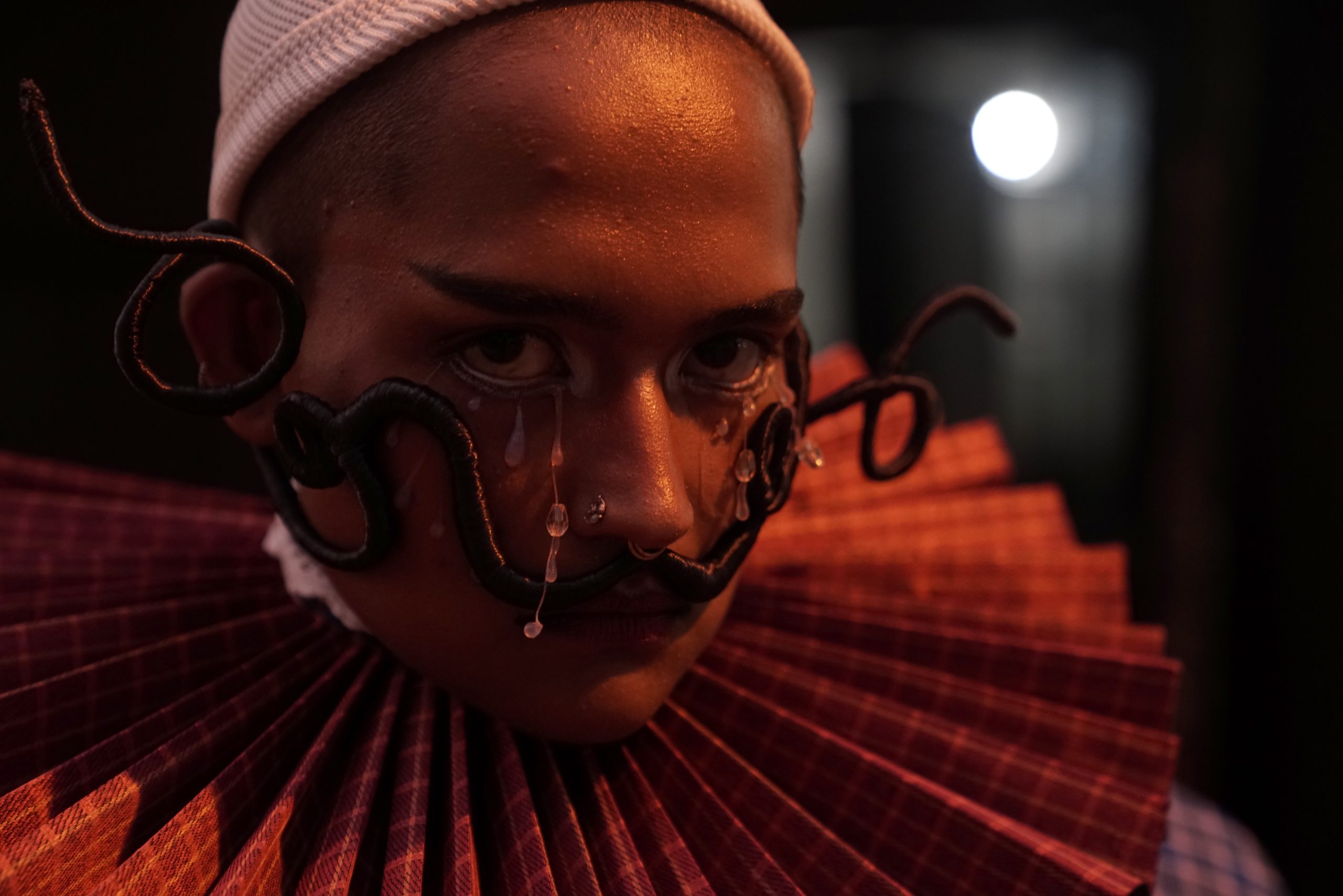Belonging to Bombay in more ways than one, Sunil Padwal’s creations speak volumes about themselves and the city they are inspired by. The aftermath of a failed Algebra exam and a school-teacher’s insistence about his affinity for art paved the path to Padwal’s journey to the prestigious J.J. School of Art.
“My father was in the hospital and I went to visit a school teacher and I asked him what I should do. He said ‘I know a peon at JJ Fine Arts, go and meet him’. So I met him and he asked me to fill out a form and told me about an aptitude test. I suppose I must have done well on the test and I got the admission,” recounts Padwal as we sit in his studio. His Studio 122, nestled in a by-lane in Lower Parel is a reflection of his artistic pursuits and his own mind. The walls are adorned with his artwork, and found objects that serve as inspiration. On entering, you are greeted by soft jazz music, yellow lights, and a huge photograph of an Ambassador car (a permanent feature on the roads of India), with intricate illustrations along the body of the vintage vehicle. The walls which are “empty”, by a standard, are filled with books of various sizes and kinds; photo-books, autobiographies, murder mysteries, books in English, Marathi and Hindi are all around the studio, complimenting the art-work and creating an environment of inspiration and authenticity.
Sunil Padwal at Studio 122, Lower Parel.
His time at J.J. – which he calls a different entity, “a place miles away from Bombay” – served as a medium of freedom, expression, and unforgettable experiences. While he was naturally gifted when it came to drawing and creating, he knew that to be able to pursue his vocation further he would need some guidance. During his second year learning fine art, a professor told Padwal that he didn’t have patience when it came to fine art – six months later, after making it a point to practise portraits every evening along with the rest of his course work, Sunil stood first in his class and began his journey in Applied Art, on the advice that he could make a better career if he studied it.
After spending a few years working in advertising and eventually realising that it was not his cup of tea, Padwal was introduced to the Sunday Observer Team where he started doing fine art based illustrations. An artist’s biggest accomplishment comes in the way viewer’s respond to their creations, and Padwal would regularly receive letters that would detail people’s reactions to and appreciation of his illustrations. With this reassurance, he approached the Times of India and began illustrating articles for them which subsequently led him to be noticed by Harsh Goenka of the RPG Art Foundation. It was Harsh who motivated Padwal and decided to set up an exhibition, which ended up being the now acclaimed artist’s first showcase.
While conceptualising the showcase, Padwal came to realise that he didn’t want to pursue any conventional means of art –watercolours, oil paint, or a canvas. Surfaces like metal, plywood, or even pages of a book were what drew him to express himself and illustrate the characters and stories he had developed. He wanted to venture into different mediums, while respecting traditional mediums, to create his own artistic language of expression.
The personification of Bombay is evident and highlighted in all his creations—an inspiration for his works from the very beginning—and whether it is to bring to light the political state or narrate traumatic and interesting stories of an individual living in urban Bombay, the city of dreams serves as a never-ending source of inspiration for Sunil Padwal.
In some of his earlier works, he did create a few pieces with on-your-nose political references, but the multi-medium artist realised that the concept just didn’t work with his manner of expression. “It’s not like the way cinema is where you can communicate socio-political issues. Art may not be expressive in that way. Of course, some art conveys sociopolitical issues, and some artists are successful in doing so. But I felt that I was sensitive, which comes through drawings, more than expressing or dealing with socio-political views. This is why I went back to my roots.” His roots are in drawing. Whether it was on the walls of his chawl or diagrams on a blackboard for his teachers, for Sunil, it boiled down to drawing on an unconventional surface, and this identity is represented in all his new art pieces and collections as well. The courageous decision to pursue art full-time breathes life into Sunil Padwal’s creations.
The Installation at Koliwada.
One of his latest creations is a site-specific creation with the RPG Art Foundation. Based in and around Worli Koliwada on the walls of a building, Padwal’s artwork is a celebration of the colourful lives and experiences of the kolis (fishermen).
“Art should always raise questions. It shouldn’t just be some beautiful looking thing,” he states. The Kolis were one of the earlier inhabitants of the seven islands of Bombay, and they have an enigmatic character. In the prime heart of the city, one can still see a village-like community and atmosphere, and Padwal’s objective was to highlight this and present it in a way that was recognised by the subject of his inspiration. His homage to this community is in the form of a colourful fish, which highlights their vivid and radiant spirits. Drawing inspiration from their stories, the traditional pandals they use for celebrations, and their struggles, Padwal created the marine motif and included images from his own childhood: visiting the Nalbajar with his father on Sundays and watching his father converse with the kolis.
During his time spent at the Koliwada creating this piece of art, Padwal was approached frequently by the community. They were intrigued with his work, would ask him thought-provoking questions, and would often invite him over for a tea and coffee break.
The Installation at Koliwada.
Padwal’s upcoming collection for the G20 Summit, which will be showcased in the Bihar Museum, is titled “60 Pages of Eloquent Silence”. The imagery for this collection is about overwriting texts or adding one more narrative to them by creating art on a page of a found book that has existing content. “It looks simple at one level, but the more you see, the more nuanced it becomes.”
The pieces are complex, sensitive, multilayered, and intricate explorations of history and newer thought, creating a richer narrative. The work, as Padwal describes it, goes beyond the past or present and is about the culmination and amalgamation of an interesting platter of found objects and the art work that Padwal produced. The artwork is created on actual pages from a book about European history, which has no correlation or connection to India, but Padwal’s objective is to use that as his canvas and write over the existing writing. His earlier collection, which contained works that were related, was about going back and finding some mundane lost histories that were painted over vintage stamp papers and postcards from Baroda, Rajasthan, and Maharashtra. In that sense, the canvas is made out of history.
A few pieces from “60 Pages of Eloquent Silence”.
One of his favourite places for inspiration is Chor Bazaar, or Kolhapur, where there is a plethora of lost history that he uses as inspiration and as a canvas for his creations. Be it a lost family photograph of a stranger or a typewriter missing a few keys, Sunil Padwal’s artistic eye encourages him to find beauty in these unique treasures and mundanities and then create art to enhance their meaning. His multilayered creations of art are unique and bring to life silent conversations between the artist and the viewer.
Whether it’s the ever-growing photo album titled Bombay on his phone or highlighting the true beauty of the city by rediscovering it’s lost heritage and using it as a canvas, Padwal can be called the city’s most devoted admirer. His art and collections are a testament and a never-ending love letter to the city, its past, present, and future.
Words by Esha Aphale.
Images courtesy of Sunil Padwal.
